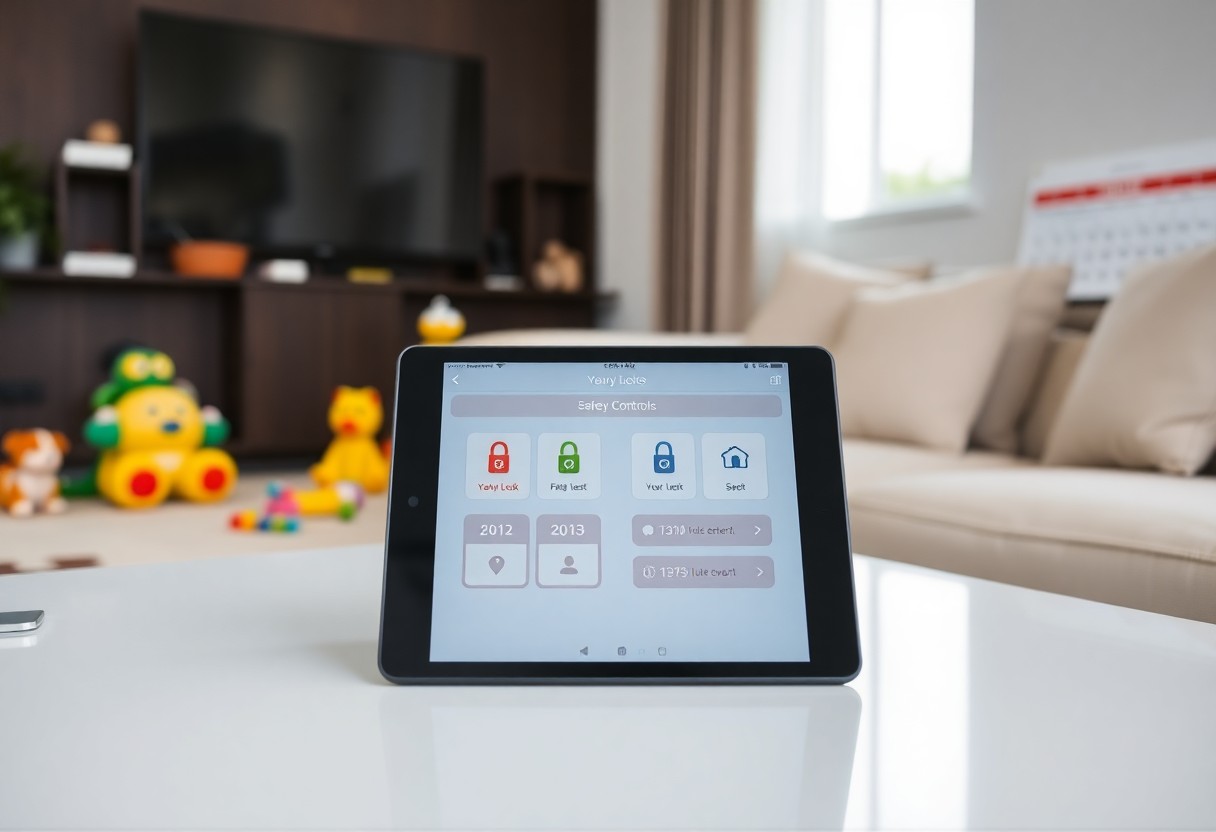With effective parental controls, you can easily create a safe online environment for your children, allowing them to explore the digital world securely. By setting these controls once, you ensure that your kids are protected from inappropriate content, harmful interactions, and excessive screen time throughout the year. This streamlined approach not only enhances their safety but also provides you with peace of mind, enabling your family to enjoy technology’s positive aspects without worry.
Key Takeaways:
- Implement robust parental controls that can be adjusted for various age groups and needs.
- Maintain consistent monitoring and updates to ensure safety as children grow and technology evolves.
- Utilize features that allow for automated settings to reduce the need for frequent manual adjustments.
Navigating the Digital Landscape: Assessing Your Child’s Risk Exposure
Understanding your child’s risk exposure in the digital realm requires a comprehensive assessment of their online activities and interactions. Consider factors such as the apps they use, the websites they visit, and their communication habits. Regularly engaging in conversations with your child about their online experiences allows you to identify potential areas of concern while increasing their awareness of safe digital practices.
Identifying Potential Online Dangers
Online dangers often include cyberbullying, inappropriate content, and online predators. Being aware of these threats means knowing the platforms your child engages with, as some, like social media and gaming sites, can expose them to harmful interactions. Regularly reviewing their privacy settings and monitoring their communications helps keep these dangers at bay.
Understanding Age-Appropriate Content
Age-appropriate content ensures that your child engages with materials suitable for their developmental stage. Content designed for younger children often emphasizes educational values and safety, while that for teens may tackle more complex themes. Aligning their online experiences with their maturity level helps foster a healthy digital environment.
For example, platforms like YouTube Kids specifically curate videos targeting preschoolers, focusing on fun and learning, while other services categorize their offerings by age group, ensuring adolescents encounter content that resonates with their interests without exposing them to inappropriate themes. Various studies show that children who interact with age-suitable content report better emotional well-being and reduced anxiety. By routinely evaluating the media your child consumes, you can guide them toward enriching digital interactions that align with their growth and development.
Building a Secure Digital Environment: Essential Parental Control Tools
Creating a secure digital environment for your child hinges on effective parental control tools that can be tailored to their needs. Utilizing a combination of software, applications, and device settings allows you to fortify their online experience. Such tools not only help in content filtering but also monitor activity, ensuring your child is safe while exploring educational resources and entertainment options online. A layered approach optimizes protection, providing peace of mind as your child navigates the internet.
Recommended Software and Applications
Several software solutions and applications stand out for their effectiveness in parental controls. Programs like Norton Family and Kaspersky Safe Kids offer comprehensive tracking functionalities, allowing you to restrict inappropriate content and set screen time limits. Qustodio provides real-time monitoring across various devices, while apps like Net Nanny excel in alerting you to concerning online behavior. Selecting the right tool often hinges on understanding your child’s unique browsing habits and needs.
Integrating Device-Specific Settings for Maximum Protection
Utilizing device-specific settings enhances your ability to manage your child’s online interactions effectively. Major operating systems, including Windows, macOS, iOS, and Android, offer built-in parental control options that can be activated with relative ease. On iOS, for example, you can set restrictions via the Screen Time feature, ensuring your child can only access age-appropriate content. Similarly, Android devices allow you to control app installations and manage screen time through Google Family Link. Leveraging these settings in conjunction with third-party tools creates a multi-faceted approach to digital safety.
Creating Boundaries: Setting Limits that Promote Healthy Habits
Establishing boundaries fosters a balanced relationship between your child and technology. Clearly defined limits on device usage help create routines that prioritize *healthy habits* and well-being. Encourage your child to engage in diverse activities throughout the day, such as outdoor play, reading, or hobbies, helping them develop *necessary life skills* while reducing dependency on screens.
Establishing Screen Time Guidelines
Set personalized screen time guidelines based on your child’s age and activity levels. The American Academy of Pediatrics suggests no more than *one hour* of high-quality programming for children aged 2 to 5, while kids 6 and older should have consistent limits that allow time for schoolwork and physical activity. Create a family media plan, outlining specific times for device use, which helps establish *positive routines* and encourages *self-regulation*.
Encouraging Offline Activities and Family Engagement
Incorporating offline activities into your child’s daily routine can significantly enhance their developmental skills. Engage in board games, cooking, or outdoor adventures as a family. Scheduling regular “tech-free” family nights helps strengthen bonds and fosters deep connections, allowing everyone to enjoy each other’s company and create lasting memories.
Think about introducing family challenges that promote *creativity and collaboration*. For example, starting a weekly art project can encourage expression and teamwork. Plan monthly outings, like hiking or visiting a museum, to instill a love for nature and learning. These shared experiences contribute to your child’s emotional and social growth, instilling values that last a lifetime. By fostering a blend of screen and offline time, you cultivate a more balanced lifestyle for your child.
Staying Ahead of the Curve: Adapting Controls as Your Child Grows
As your child matures, their digital interactions will shift, demanding an evolution in your parental control strategies. Tailoring your approach to align with their developmental stages ensures that the controls remain effective and relevant. By regularly reassessing their activities and needs, you can implement appropriate restrictions, fostering both safety and independence as they navigate their digital world.
Evolving Strategies for Different Age Groups
Different age groups necessitate unique control approaches. For younger children, robust filtering tools may be vital to shield them from inappropriate content. As they enter adolescence, empowering them with more privacy and autonomy, coupled with defined guidelines, promotes a healthy balance between security and self-regulation. Stay flexible and engaged to adapt accordingly.
The Role of Open Communication and Trust in Control Systems
Open communication builds a foundation of trust, enhancing the effectiveness of your control systems. Engage with your child about their online activities and concerns, encouraging them to share their experiences. This transparency not only fosters a safe environment but also helps you understand how their needs change over time, allowing for more tailored adjustments to the controls.
Establishing a dialogue around digital safety cultivates a sense of agency and responsibility in your child. When they feel comfortable discussing their online encounters, it motivates them to adhere to safety practices and guidelines you set forth. Regular check-ins reinforce this dynamic, making them more likely to respect boundaries you’ve implemented while fostering a partnership rather than an authoritarian relationship. This collaborative approach creates opportunities for shared learning, equipping your child with imperative skills to navigate their digital landscape confidently.
Monitoring Without Overstepping: Finding the Right Balance
Striking the right equilibrium between monitoring your child’s online activities and granting them independence can be challenging. Aim for a system that keeps your child safe while also respecting their autonomy. Regular conversations about online experiences and responsible use of technology foster trust and facilitate open dialogue. This can lead to better understanding and cooperation when it comes to employing parental controls.
Implementing Transparent Tracking Methods
Transparent tracking methods empower children by involving them in the process. Use apps that show which sites are being accessed and encourage discussions around their online behavior. Establishing clear expectations about what you monitor not only helps maintain trust but also reinforces the idea that your intentions are protective rather than invasive. Engaging your child in this transparency reinforces a sense of responsibility and awareness.
Respecting Privacy While Ensuring Safety
Balancing safety with privacy is important for fostering a healthy relationship with your child. Clearly communicate the reasons behind monitoring and set boundaries regarding the type of content you check. Involving them in setting these rules reinforces that this is a collaborative effort aimed at ensuring safety without compromising their sense of autonomy.
Respecting your child’s privacy involves creating an environment where they feel secure sharing their online experiences with you. Regularly discuss what privacy means to them and how their online footprint can impact their life. By establishing guidelines together, you build trust and demonstrate that your goal is to protect them from potential dangers such as cyberbullying, inappropriate content, or online predators. This proactive approach not only enhances their safety but also encourages them to engage responsibly with technology, fostering a sense of accountability and self-regulation.
Conclusion
Taking this into account, implementing kid-friendly parental controls allows you to establish a safe online environment for your children. By setting these controls once, you can effectively monitor their digital activities and protect them from inappropriate content throughout the year. This proactive approach empowers you to foster a healthy relationship between your children and technology, ensuring they can explore the digital world confidently and securely.



